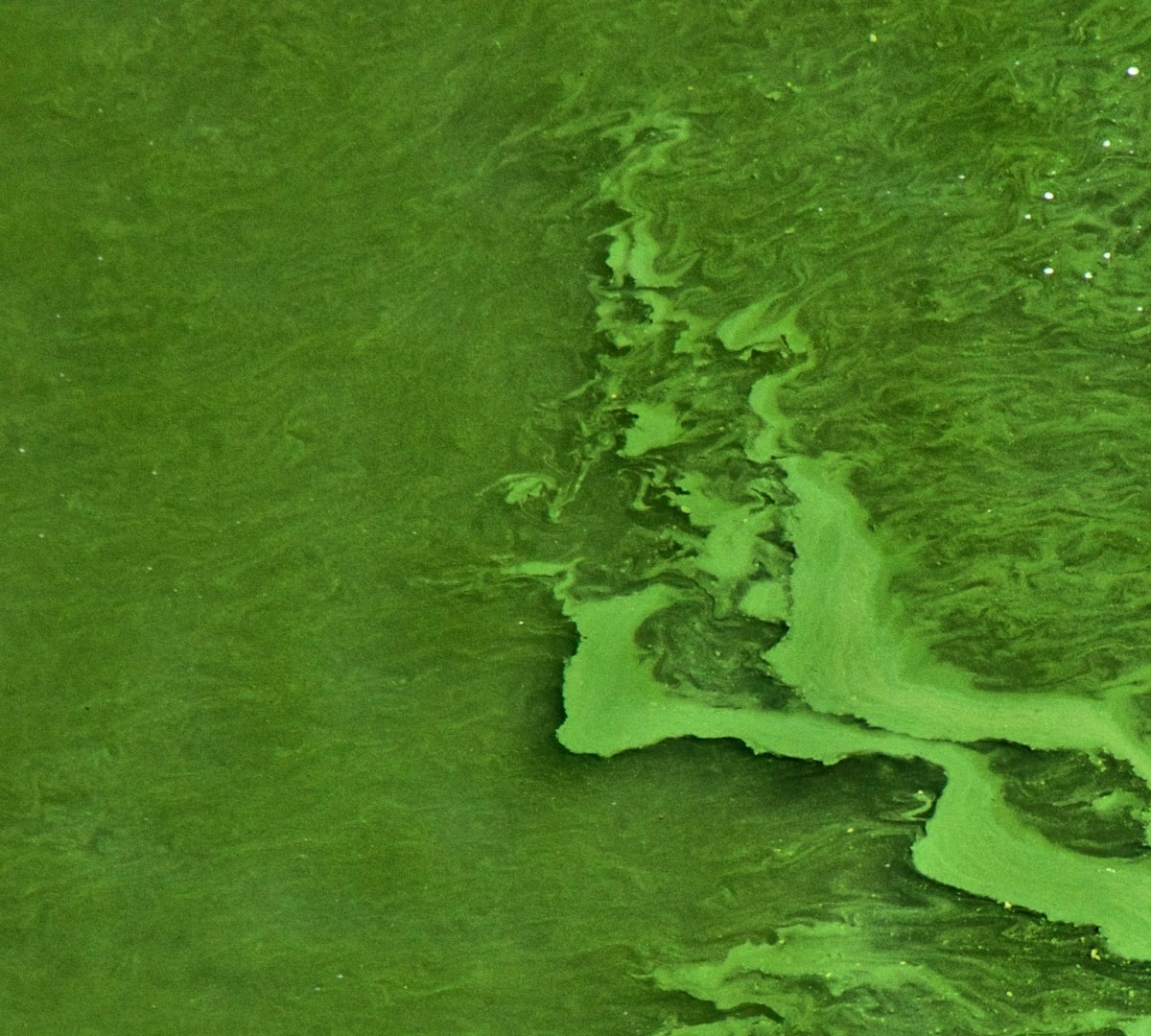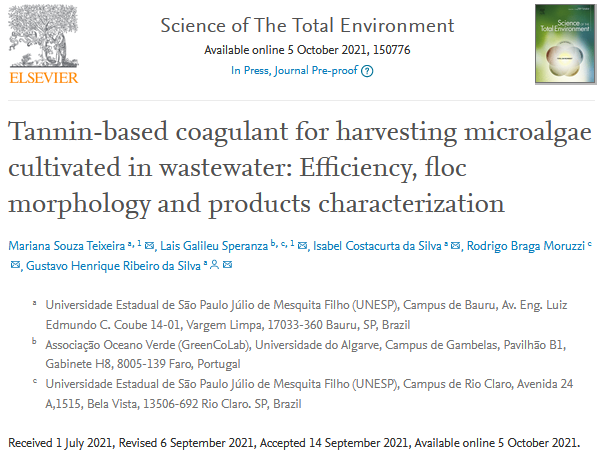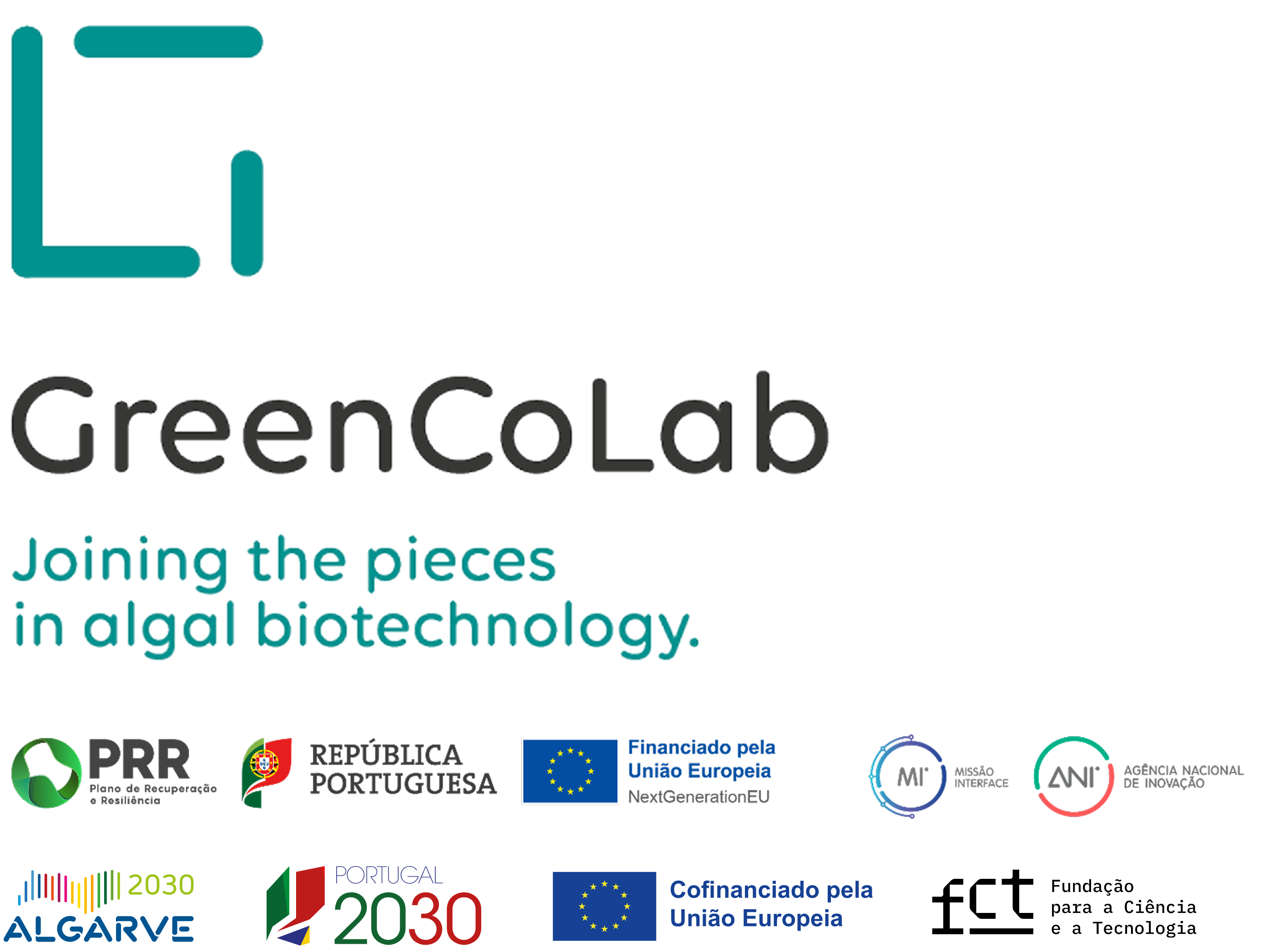

TITLE
Tannin-based coagulant for harvesting microalgae cultivated in wastewater: Efficiency, floc morphology and products characterization
JOURNAL
Science of The Total Environment
AUTHORS
Mariana Souza Teixeira, Lais Galileu Speranza, Isabel Costacurtada Silva, Rodrigo Braga Moruzzi, Gustavo Henrique Ribeiro da Silva
ABSTRACT
Tannin-based coagulants (TBCs) have the potential to be used to harvest microalgae cultivated at wastewater treatment plants. Their use would address the circular economy associated with the production of low-toxicity biomass and supernatant. Studies in this field are still scarce, and substantial gaps exist in the definitions of the flocculation process parameters. In this context, the objective of this work was to evaluate TBC performance as a natural coagulant for harvesting microalgae biomass grown in sanitary effluent digested in an up flow biofilter, as well establishing a path to enable recovery and reuse of wastewater nutrients. Classical removal techniques combined with image analysis and light scattering-based equipment were used to evaluate the coagulant performance, recovery efficiency, floc strength, and floc recovery compared to aluminum sulfate (AS). The results showed that TBC was able to efficiently harvest algal biomass from the effluent, achieving color, turbidity, and optical density (OD) removal efficiencies greater than 90% with only 5 min of sedimentation. The optimal harvesting dosage was 100 mg·L−1 for TBC and 75 mg·L−1 for AS. TBC presented the advantage of harvesting biomass without changing the pH of the medium and was also able to present satisfactory removal of the analyzed parameters (color, turbidity and OD) at pH values of 5.0, 7.0, and 8.5. In addition, TBC produced stronger flocs than AS, showing a better ability to resist breakage upon sudden shear rate variations. TBC produced macronutrient-rich biomass and supernatant that was similar to that produced with AS.



